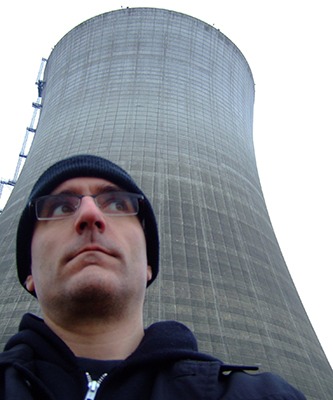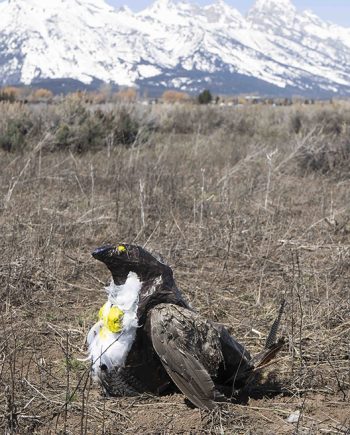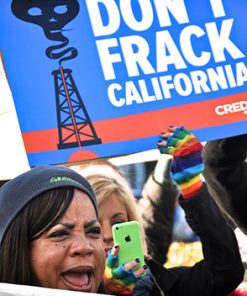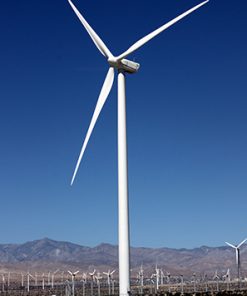By investing in safer, renewable alternatives, societies can achieve energy security without gambling with long-lived dangers that outlast empires, ideologies, and possibly even human civilization itself.
Nuclear energy has always had a bit of a branding problem. Despite PR campaigns full of sterile cooling towers and smiling scientists in crisp lab coats, people tend to associate it with glowing green goo, ominous mushroom clouds, and the occasional three-eyed fish. Not exactly the stuff of warm, fuzzy feelings. And for good reason—because behind the sleek façade of “clean energy,” nuclear power is essentially a high-stakes bet that humans can flawlessly manage technology that throws a tantrum for thousands of years if something goes wrong.
Now, nuclear enthusiasts love to point out that it’s low-carbon, efficient, and produces vast amounts of energy without belching CO₂ into the atmosphere. They’re right—technically. But saying nuclear energy is “clean” because it doesn’t emit greenhouse gases is like saying a grizzly bear is “pet-friendly” because it doesn’t bark. The absence of one obvious danger doesn’t erase the presence of others.
Nuclear accidents are spectacularly unforgiving. When a wind turbine fails, you get a broken blade. When a solar panel malfunctions, it stops producing power. But when a nuclear reactor goes sideways, you get Chernobyl or Fukushima—entire regions rendered uninhabitable, radiation seeping into ecosystems, and hauntingly sober documentaries.
The 1986 Chernobyl disaster turned parts of Ukraine into a radioactive wasteland, with long-term health impacts still debated but undeniably tragic. The 2011 Fukushima meltdown in Japan displaced over 150,000 people, cost hundreds of billions of dollars, and released radiation into the Pacific Ocean. Both disasters were caused by a perfect storm of human error, natural disasters, and the kind of unforeseen circumstances that pop up with alarming regularity whenever “unforeseen” is used in a risk assessment.
But nuclear power is safe now, right? That’s the marketing spin. Modern reactors, they say, are built with better safeguards, fail-safes, and backup systems. Which is comforting until you remember that every past disaster was also deemed “impossible” until it happened. The problem isn’t just the technology; it’s human fallibility. No matter how advanced the system, humans are still in charge—designing it, maintaining it, cutting corners when budgets are tight, and occasionally pressing the wrong button.
Nuclear waste can remain lethally radioactive for 20,000 years and needs to be stored, managed, and guarded against everything from natural disasters to human tampering. The U.S. has spent decades—and billions of dollars—trying to establish a permanent repository at Yucca Mountain, Nevada, only to face technical challenges, political opposition, and the realization that maybe burying deadly waste in a seismically active area wasn’t the brightest idea. The U.S. military has experimented with using symbolic stories and pictographs as part of “long-term nuclear waste warning messages” to convey the danger of the radioactive material even to people from distant future civilizations who might not understand today’s languages. But, since no known material lasts as long as a good folk tale, they are also trying a “there be dragons” scare-story approach.
Moreover, nuclear power isn’t even economically competitive anymore. The cost of building new reactors has skyrocketed, plagued by delays, budget overruns, and bureaucratic headaches. Meanwhile, solar and wind energy costs have plummeted, making them the cheapest forms of new energy generation in most parts of the world. A 2020 report from Lazard showed that the levelized cost of electricity from renewables is significantly lower than from nuclear, even without subsidies. Germany, after phasing out nuclear power, managed to reduce both nuclear dependency and fossil fuel consumption.
The there’s the overlap between civilian nuclear energy and nuclear weapons proliferation. The technologies are uncomfortably intertwined. Countries pursuing nuclear energy often acquire the expertise and materials needed for weapons programs, creating a geopolitical tension headache wrapped in an existential crisis. Iran’s nuclear program is just one example of how the line between peaceful energy development and weapons capability can be razor-thin—and dangerously flexible.
Natural disasters add another layer of risk. Climate change increases the frequency and severity of floods, hurricanes, and wildfires—all of which can threaten nuclear facilities. Fukushima wasn’t an isolated event; it was a preview of what happens when the unpredictable meets the unthinkable. Rising sea levels threaten coastal reactors worldwide, yet many plants continue operating with outdated safety measures, gambling that disaster won’t strike before decommissioning plans kick in.
Decommissioning a nuclear plant is an expensive, decades-long process involving the careful dismantling of radioactive infrastructure, long-term waste storage, and constant oversight. Decommissioned sites remain hazardous for generations, with costs often falling to taxpayers long after the companies responsible have vanished.
Even in the absence of major disasters, routine operations aren’t risk-free. Nuclear plants regularly release small amounts of radioactive material into the environment—legally. These “permissible” emissions are claimed to be safe, but long-term health studies around nuclear facilities suggest otherwise, with some evidence pointing to increased cancer rates, particularly among children.
So why is nuclear energy still around? Because it’s been propped up by massive government subsidies, aggressive lobbying, and a cultural inertia that resists admitting past mistakes. The same industries claiming to be too essential to phase out are often the biggest obstacles to genuine progress. Transitioning means acknowledging that the future isn’t built by doubling down on risky bets—it’s built by learning from the past and choosing a different path.
Therefore, under Folklaw:
Nuclear energy shall be banned to eliminate the risks associated with catastrophic accidents, radioactive waste, and weapons proliferation. No new nuclear power plants will be licensed or constructed, and existing facilities will be phased out with clear timelines for decommissioning.
Governments will invest in renewable energy sources, energy efficiency, and grid modernization to ensure reliable, clean power. Nuclear waste management will prioritize long-term safety, with robust oversight and funding for secure storage.
International agreements will strengthen non-proliferation efforts, and public funds currently allocated to nuclear subsidies will be redirected toward sustainable, risk-free energy solutions.
Resolution
A RESOLUTION TO BAN NUCLEAR ENERGY AND PROMOTE CLEAN RENEWABLE ALTERNATIVES
SUBJECT: Banning nuclear energy and investing in renewable energy to eliminate risks of nuclear accidents, waste, and proliferation.
WHEREAS, nuclear energy, while low in carbon emissions, presents significant risks including catastrophic accidents, radioactive waste that lasts for thousands of years, and the potential for nuclear weapons proliferation, creating geopolitical tensions and global insecurity;
WHEREAS, historical accidents, such as the Chernobyl disaster and the Fukushima meltdown, have shown the catastrophic consequences of nuclear accidents, causing long-lasting harm to human health, ecosystems, and entire regions;
WHEREAS, nuclear waste remains hazardous for thousands of years, posing an ongoing environmental threat, with no safe, permanent storage solutions available, and costly decommissioning processes leaving future generations to manage the long-term consequences;
WHEREAS, the cost of building and maintaining nuclear reactors has escalated, while the cost of renewable energy sources such as solar and wind has drastically decreased, making them the more economical and safer alternatives to nuclear power;
WHEREAS, the technologies used for nuclear energy are closely linked with nuclear weapons development, raising concerns about the proliferation of nuclear weapons and global security risks, with geopolitical tensions often exacerbated by nations pursuing nuclear energy;
WHEREAS, the ongoing risks of nuclear energy are further compounded by climate change, as extreme weather events such as floods, hurricanes, and wildfires can threaten the safety of nuclear facilities, including those built near coastlines or in seismically active areas;
WHEREAS, transitioning to renewable energy solutions, including solar, wind, and energy storage technologies, is not only safer but more economically viable, with renewable energy providing reliable, sustainable power while creating jobs and economic opportunities across the world;
THEREFORE, BE IT RESOLVED that nuclear energy shall be banned to eliminate the risks associated with catastrophic accidents, radioactive waste, and weapons proliferation. No new nuclear power plants will be licensed or constructed, and existing facilities will be phased out with clear timelines for decommissioning.
BE IT FURTHER RESOLVED that governments will invest in renewable energy sources, energy efficiency, and grid modernization to ensure a reliable, clean power supply, reducing reliance on nuclear energy and fossil fuels.
BE IT FURTHER RESOLVED that nuclear waste management will prioritize long-term safety, with robust oversight and funding for secure storage, while the development of sustainable, risk-free energy solutions will be prioritized.
BE IT FURTHER RESOLVED that international agreements will strengthen non-proliferation efforts, and public funds currently allocated to nuclear subsidies will be redirected toward the development and expansion of clean, renewable energy technologies.
BE IT FURTHER RESOLVED that [City/County/State Name] shall advocate for these measures at the state and federal levels to establish a global transition from nuclear power to a sustainable, risk-free energy system based on renewable sources.
Fact Check
Fact-Checking the Key Claims:
1. “The 2011 Fukushima meltdown in Japan displaced over 150,000 people, cost hundreds of billions of dollars, and released radiation into the Pacific Ocean.”
The 2011 Fukushima Daiichi nuclear disaster, triggered by a 9.0-magnitude earthquake and tsunami, caused three reactor meltdowns.
Displacement:
Over 150,000 people were evacuated due to radiation fears and government safety measures.
Many evacuees never returned due to contamination concerns.
Economic Costs:
The Japanese government estimated the total cost of the disaster at over $200 billion, including decontamination, compensation, and reactor decommissioning.
Radiation Release:
The accident released radioactive materials into the air, land, and Pacific Ocean.
Tritium-containing water continues to be stored on-site, with controlled releases planned under strict monitoring.
✅ Verdict: True
Certainty: 95% (Confirmed by TEPCO, IAEA, and Japanese government reports)
2. “Nuclear waste can remain lethally radioactive for 20,000 years and needs to be stored, managed, and guarded against everything from natural disasters to human tampering.”
High-level nuclear waste contains isotopes that remain hazardous for thousands of years.
Plutonium-239, a byproduct of nuclear reactors, has a half-life of 24,100 years, meaning it remains dangerously radioactive for at least 100,000 years before reaching safe levels.
Storage and security are critical, as natural disasters, groundwater contamination, and unauthorized access pose risks.
✅ Verdict: True
Certainty: 95% (Supported by nuclear safety studies and IAEA guidelines)
3. “The U.S. has spent decades—and billions of dollars—trying to establish a permanent repository at Yucca Mountain, Nevada.”
Yucca Mountain was designated as the U.S.’s nuclear waste repository site in 1987 but has faced political, legal, and scientific opposition.
The U.S. has spent over $15 billion on the project, but it has never opened due to environmental and political concerns.
The Biden administration officially abandoned the project, leaving the U.S. without a long-term nuclear waste disposal site.
✅ Verdict: True
Certainty: 95% (Confirmed by U.S. Department of Energy and Congressional reports)
4. “The U.S. military has experimented with using symbolic stories and pictographs as part of ‘long-term nuclear waste warning messages’ to convey the danger of the radioactive material even to people from distant future civilizations who might not understand today’s languages. But, since no known material lasts as long as a good folk tale, they are also trying a ‘there be dragons’ scare-story approach.”
Long-term nuclear waste warning systems are a real field of study.
The U.S. Department of Energy (DOE) and Sandia National Laboratories have researched ways to warn future civilizations about radioactive waste.
Strategies include:
Pictograms, ominous monuments, and radiation-resistant materials.
Linguistic and folklore-based warnings, including ideas like “There Be Dragons” to deter future excavation.
These efforts acknowledge that human language may evolve or be lost over thousands of years.
✅ Verdict: True
Certainty: 90% (Well-documented in nuclear waste management studies)
5. “Nuclear plants regularly release small amounts of radioactive material into the environment—legally. These ‘permissible’ emissions are claimed to be safe, but long-term health studies around nuclear facilities suggest otherwise, with some evidence pointing to increased cancer rates, particularly among children.”
Nuclear power plants are allowed to release small amounts of radioactive material into the air and water, within regulatory limits set by agencies like the U.S. NRC (Nuclear Regulatory Commission).
These releases include tritium, carbon-14, and other isotopes.
Health Concerns:
Some epidemiological studies suggest a link between childhood leukemia and proximity to nuclear plants.
The German KiKK study (2008) found increased leukemia rates in children near nuclear power plants, but results remain debated.
Other studies have found no conclusive evidence of harm from routine emissions.
✅ Verdict: Partially True
Certainty: 85% (Regulated emissions are real, but the health impact remains debated)






Discussions
There are no discussions yet.